Photo: © ITAR-TASS/Alexandra Krasnova
Stalin skyscrapers are the most famous buildings built in Moscow in the 20th century. They became a real exhibition of Soviet achievements in the field of architecture and engineering. An incredible number of legends are built around them, but the story of their appearance is much more incredible. Take, for example, the fact that according to the plan there should have been eight of them (the skyscraper in Zaryadye was never built), and the start of construction was announced on the same day, September 7, 1947. Skyscrapers have become a gift for the 800th anniversary of the capital: one skyscraper for each century. About the history of the Moscow “seven sisters” – in the material REN TV.
What is the Stalin Empire
The skyscrapers that defined post-war Moscow were built in a style that the Western press and the Soviet architectural society later dubbed the Stalinist Empire style. It combines elements of the Renaissance, Baroque, Empire of the Napoleonic era, late classicism, post-constructivism, art deco, and neo-Gothic (the building of the Ministry of Foreign Affairs). The Stalinist Empire combines pomposity, luxury, majesty and monumentality.
If we talk about the architecture of skyscrapers, then this style is characterized by the use of architectural orders with clear proportions and rich decor. Soviet symbols, workers and collective farmers, soldiers and sailors were the main characters of the bas-reliefs and mosaics. Marble and granite were often used to decorate buildings.
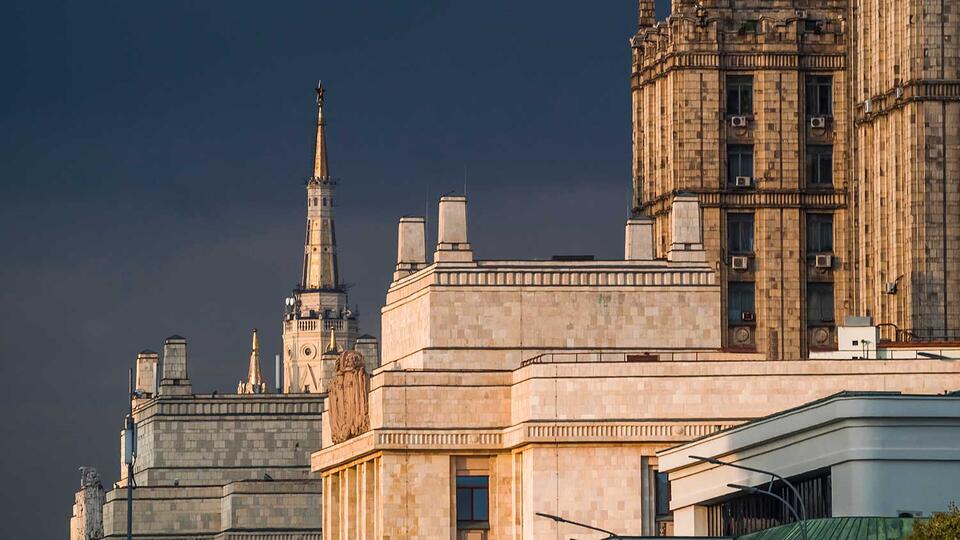
A distinctive feature of the furniture used in interior design in the Stalinist Empire style is carving. It includes images of laurel wreaths, ears of corn and five-pointed stars.
An important detail of the Stalinist Empire style is the chandeliers that illuminate the room and have a front view. Often they are made of bronze and decorated with crystal pendants. Natural materials were used for interior decoration – wood, marble, bronze, ceramics and crystal.
All “seven sisters” were founded on the same day, but each of the skyscrapers has its own history of construction and transformation.
Leningradskaya Hotel (139 m)
“Leningrad” – the lowest of the Stalinist skyscrapers. During its construction on Komsomolskaya Square, not only a strong frame was needed, but also additional support in the form of 10-meter piles. Such a particularly reliable construction is connected with the landscape: two underground rivers flowed through the square – Rybinka and Chechera.

The facade of the hotel refers to traditional Russian architecture (the design of the tower) and baroque (torn pediments with shells). The decoration of this skyscraper was the most luxurious – which is worth only a 15-meter bronze chandelier-garland, occupying several floors. Thanks to her, the building got into the Guinness Book of Records.
It was “Leningradskaya” that became the target of critics of Stalinist architecture in 1954. Architects Leonid Polyakov and Alexander Boretsky were accused of misappropriation of funds, “bourgeois pomposity” and an erroneous understanding of socialist realism. Also, the craftsmen were deprived of the Stalin Prize, which was given shortly before for the high-rise project.
Skyscraper on Barrikadnaya (156 m)
The skyscraper on Barrikadnaya has many names. It is also known as the skyscraper on Kudrinskaya Square or on Vosstaniya Square (as it was called in Soviet times), and also as the House of Aviators, since the construction of the building was supervised by the Ministry of Aviation Industry.
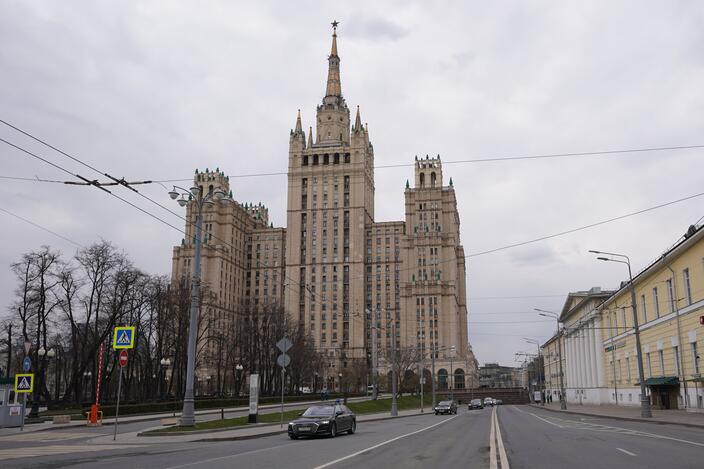
In the central section of the skyscraper – 33 floors. The building has a powerful stylobate lined with granite: going around it, you find yourself many meters below the entrance to the entrance.
The building had its own infrastructure – a hairdressing salon, an atelier, a post office, an ice cream parlor and a cinema “Flame”.
Building of the Ministry of Foreign Affairs (172 m)
Perhaps the most famous story about the Foreign Ministry building is the story about its spire. According to the initial designs, many skyscrapers did not have spiers, but for some reason it was the spire of the Ministry of Foreign Affairs that acquired a legend according to which Stalin himself was dissatisfied with the flat top without a turret and ordered everything to be fixed.
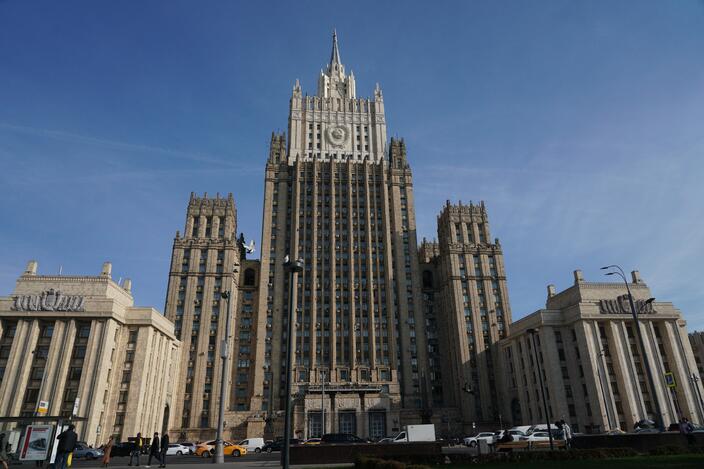
In fact, the exact reason why they decided to add the spire to a building already under construction is unknown (in other high-rise buildings, the spire was added at the design stage).
But precisely because of this, it had to be made small and made of metal painted to match the color of the building, so as not to overload the frame. Today, the spire is noticeably different in color from the skyscraper itself. It was recently replaced and the top of the building was cleaned up, returning it to its original light beige color.
High-rise on the Red Gate (138 m)
This skyscraper is the only one of the seven that has a built-in underground metro lobby. The parallel construction of a skyscraper and the creation of an additional exit from the metro posed a very difficult task for engineers, which, moreover, was aggravated by water-saturated soils.

Now the escalator in this lobby is interrupted by an intermediate platform, and then it is located at a different angle. We had to make a turn because of the floaters.
Also, in order to further strengthen the foundation, it was decided to freeze the soil around the pit during construction. To do this, they held special pipes through which calcium chloride brine was let in. And so that the swelling of the soil would not lead to the subsequent deviation of the building, they immediately began to build a high-rise building at a slight angle. The calculations were carried out by designer Viktor Abramov, and the building itself was designed by Alexei Dushkin, the author of such masterpieces of the Moscow metro as Mayakovskaya, Kropotkinskaya, Revolution Square, Novoslobodskaya, Avtozavodskaya.
Skyscraper on Kotelnicheskaya embankment (176 m)
The residential skyscraper on Kotelnicheskaya embankment was designed by Dmitry Chechulin, who was also supposed to build the eighth “sister” in Zaryadye. The side buildings form an almost right angle with a truncated top, one side of which is extended along the Kotelnicheskaya embankment of the Moscow River, and the other along the Podgorskaya embankment of the Yauza.
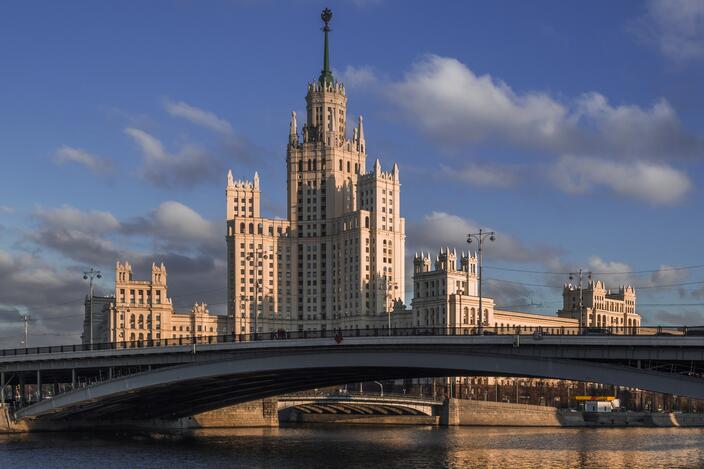
The high-rise part is decorated with decorative arcades at the level of the side turrets; large statues of Komsomol members are clearly visible from the ground at approximately the same level.
The characteristic decoration of this skyscraper – small decorative turrets with balls or “twisted” structures at the end – refers to pinnacles, a traditional element of medieval Gothic architecture.
The elite house housed the Illusion cinema, shops, a post office, cafes, beauty salons, a laundry, an art studio, a chess school, and even a branch of the Warsaw hotel.
The list of residents was also impressive: composer Nikita Bogoslovsky, movie stars Klara Luchko, Lidia Smirnova, Nonna Mordyukova, Mikhail Zharov, director Roman Karmen, animal trainer Irina Bugrimova, singer Lyudmila Zykina, poets Robert Rozhdestvensky and Andrey Voznesensky, writers Vasily Aksenov and Konstantin Paustovsky lived here, theater and film actor Alexander Shirvindt.
Hotel “Ukraine” (206 m)
Hotel “Ukraine” was put into operation the last of the seven skyscrapers. Interestingly, at first it was planned to be built on the Leningrad Highway, not far from the Dynamo stadium. While they found a new place, 1953 came, Stalin died, and the project was almost curtailed. It is believed that Khrushchev was convinced of the need to build a hotel by renaming it from “Dorogomilovskaya” to “Ukraine”.

The central building is occupied by the hotel itself, and apartments are located in the side buildings with a variable number of storeys. The side turrets are stylized as sheaves of wheat.
The architectural design of the building organically intertwined the latest construction technologies of that time and the traditions of palace architecture. The severity of the geometry of the outbuildings, the presence of corner turrets, the spire on the tower of the central building – all this gives the building austerity and grandeur.
Main building of Moscow State University (240 m)
According to the project, the eighth skyscraper in Zaryadye was supposed to be the highest, but in the end this status went to the Main Building of Moscow State University. Initially, Boris Iofan worked on the project, but due to disagreements over the exact construction site, he was removed from work, and Lev Rudnev was appointed architect.

The foundation and frame of the high-rise building were developed by the outstanding designer, the future creator of the Ostankino TV tower, Nikolai Nikitin. The fundamentally new technical solutions proposed by him, for example, a box-shaped foundation, flexible columns in the ground floor of the building, metal columns of a cruciform section, made it possible to build a high-rise building of variable height in difficult soil conditions, without temperature and sedimentary seams. The main building of Moscow State University was the tallest building in Europe until 1997.
Legends and myths of the “Seven Sisters”
Stalin’s skyscrapers – the most noticeable architectural heritage of the Soviet government – could not help but acquire myths and legends. Here is some of them:
There is a belief that somewhere in the basements of the main building of Moscow State University, to this day, a bronze statue of the “leader of the peoples” is immured, which should have been installed instead of the spire, but changed their minds after his death. This, of course, is a fiction: the work on the foundation was completed even before the beginning of 1951, when Stalin was alive, and on September 1, 1953, Moscow State University had already opened its doors to students.
The next legend is also associated with the university – allegedly, during the construction of the Faculty of Chemistry, jasper columns from the Cathedral of Christ the Savior were used, which were preserved after its demolition. And it seems that in the building there are fragments from a variety of destroyed architectural monuments, for example, the wreckage of the Reichstag. There is a small amount of truth in this: the faculty was indeed once equipped with captured German fume hoods. But jasper columns were unlikely to have stood even in the Cathedral of Christ the Savior itself – in any case, historians have not found evidence of this.
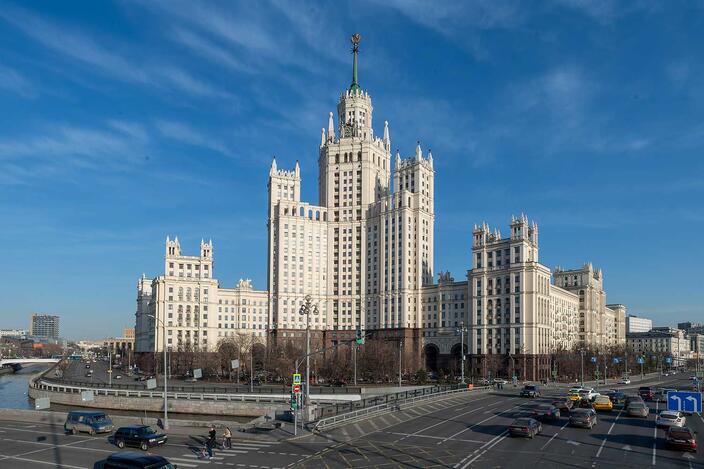
Now the price of a two-room apartment in a high-rise building on Kotelnicheskaya Embankment can reach several tens of millions of rubles. However, few people know that the first residents of this house suffered from the invasion of cockroaches – the building was built on the site of flour warehouses. The poet Yevgeny Yevtushenko wrote about the misfortune that befell him and his famous neighbors:
Cockroaches in a high-rise building –
god did not save
The Moscow City Council did not save.
All in a tragic panic –
except for cockroaches
storming us.
Admirals and ballerinas
atomic physicist and poet
clog under the feather beds,
there is no cockroach shelter.
There is a legend that the upper floors of the high-rise hotel “Ukraine” are made worse than the lower ones: the spire was built by prisoners, and the authorities were afraid to climb to such a height. Another legend can partly explain the collapse of one of the towers of the hotel in 2007: allegedly, in order to complete the building as soon as possible and receive delegates from the World Festival of Youth and Students in 1957, salt was mixed into the concrete.
The skyscraper on the Red Gate Square is very fond of parapsychologists and fans of everything supernatural in general. They tell stories about local ghosts, and the most famous of them is the legend of the laughing ghost. He was a minor official who served in the Ministry of Transport Construction, which was located here in Soviet times. He tried to woo the wife of a high-ranking nomenclature worker and once told her a political anecdote. The young lady laughed and told it to her husband. He did not laugh, but forcibly sent the unlucky boyfriend to a mental hospital, where he went crazy and died. After his death, the ghost decided to settle in his native ministry and now reminds of himself in the noisy corridors of the high-rise building near the Red Gate.
Source: Ren
Ray Bly is an accomplished journalist in the field of Automobile. He currently works as a writer at 24 news breaker. With a deep understanding of the Automotive industry and a talent for uncovering the latest developments, Ray’s writing provides readers with insightful and informative coverage of the latest news and trends in the field.
